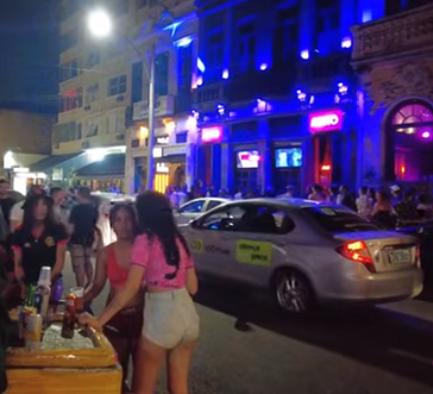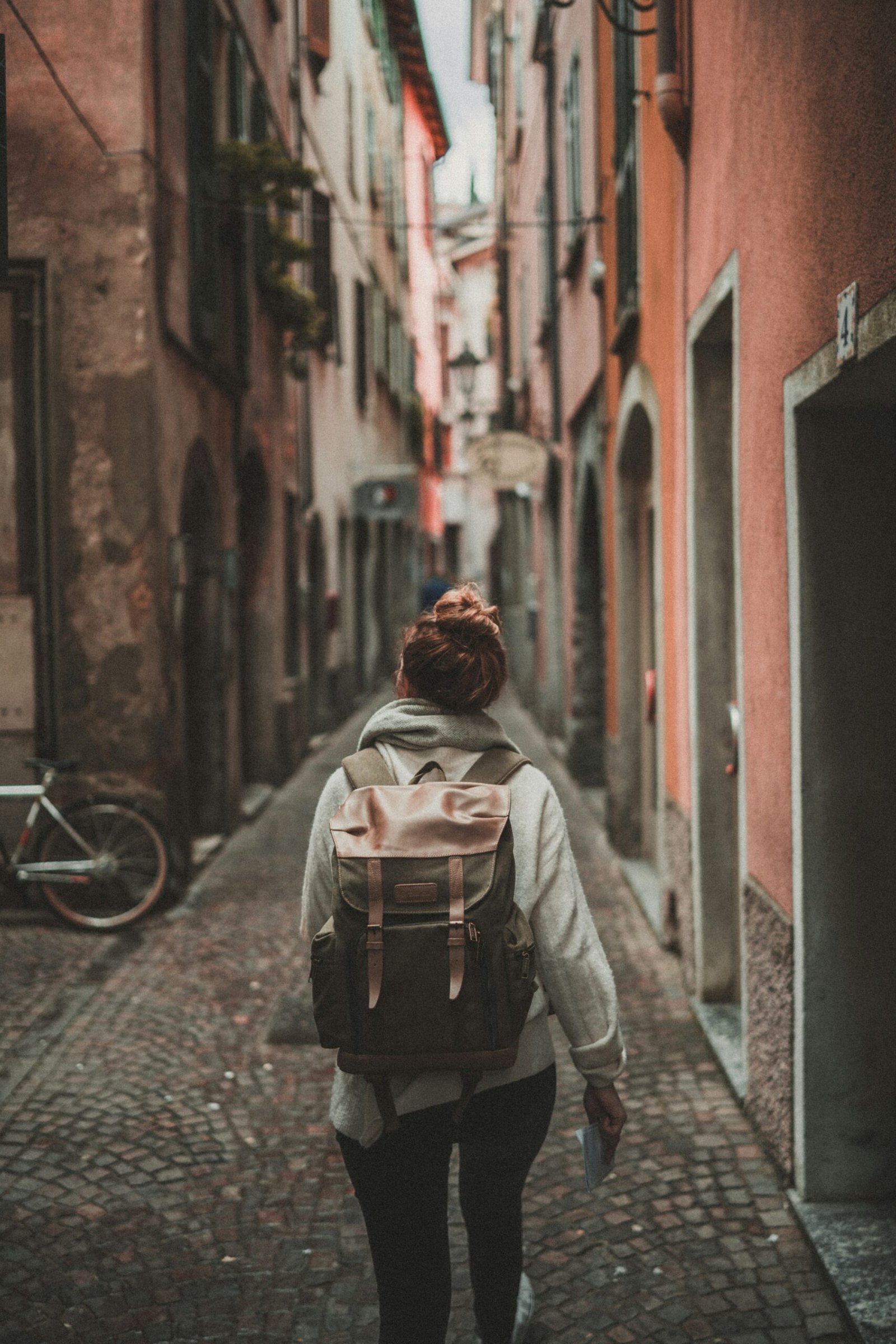Exploring Lapa Nightlife and the Vibrant Rio Carnival in Brazil
Lapa and Rio Carnival
Lapa, a historic neighborhood nestled within the heart of Rio de Janeiro, is renowned for its electric nightlife and vibrant cultural scene. Characterized by its iconic architecture, including the famous Arcos da Lapa aqueduct, this area has long been a hub for artists, musicians, and nightlife enthusiasts. Lapa’s streets come alive at night, filled with the sounds of samba, choro, and other traditional Brazilian music, making it a magnet for both locals and tourists seeking an authentic Rio experience.
The Rio Carnival, a globally celebrated event, epitomizes the spirit and cultural richness of Brazil. Held annually before Lent, this festival has deep roots dating back to the 18th century, when Portuguese settlers introduced the concept of a pre-Lenten celebration. Over the years, Rio Carnival has evolved into a massive, multifaceted event featuring parades, street parties, and elaborate costumes, all set to the rhythm of samba. The Sambadrome Marquês de Sapucaí serves as the main stage for the samba school parades, where participants showcase months of preparation through dazzling performances.
The cultural significance of both Lapa and the Rio Carnival cannot be overstated. Lapa stands as a testament to Rio’s enduring love for music and nightlife, while the Rio Carnival highlights the city’s ability to bring together people from all walks of life in a grand celebration of joy and unity. Together, they offer a profound insight into the heart and soul of Rio de Janeiro, setting the stage for an exploration of the unique experiences they provide.
The Heart of Lapa: Arcos da Lapa
The Arcos da Lapa, or Lapa Arches, stand as an enduring symbol of Rio de Janeiro’s rich cultural landscape. Originally constructed in the mid-18th century as an aqueduct to channel fresh water from the Carioca River to the burgeoning city, the structure has undergone a remarkable transformation over the centuries. Today, it serves not only as a historical monument but also as a vibrant cultural hub that attracts both locals and tourists alike.
Architecturally, the Arcos da Lapa are a marvel of colonial engineering. The structure is composed of 42 arches arranged in two tiers, spanning 270 meters and reaching a height of 17.6 meters. This impressive design has stood the test of time, showcasing the ingenuity and craftsmanship of its creators. The arches, constructed from stone and lime, have become an iconic landmark, seamlessly blending the past with the present in the bustling neighborhood of Lapa.
The historical significance of the Arcos da Lapa extends beyond its original purpose as an aqueduct. In the late 19th century, as the city modernized, the aqueduct was repurposed to serve as a viaduct for the Santa Teresa Tram, which continues to operate today, offering passengers a scenic route through some of Rio’s most picturesque areas. This adaptation underscores the city’s ability to preserve its heritage while embracing progress.
In contemporary times, the Arcos da Lapa have evolved into a central gathering point for Rio’s vibrant nightlife and cultural scene. The area surrounding the arches comes alive after dark, with an array of bars, restaurants, and music venues that cater to a diverse crowd. Street performers, artists, and vendors contribute to the lively atmosphere, making the Arcos da Lapa a must-visit destination for anyone looking to experience the pulse of Rio’s dynamic culture.
Whether viewed as a historical relic or a modern cultural landmark, the Arcos da Lapa encapsulate the spirit of Rio de Janeiro, bridging the gap between its storied past and its vibrant present. Its enduring appeal continues to draw visitors, ensuring that it remains a focal point in the heart of Lapa for years to come.
Nightlife in Lapa: Bars and Clubs
Lapa, a historic neighborhood in Rio de Janeiro, is renowned for its dynamic nightlife, attracting both locals and tourists with its eclectic mix of bars and clubs. This vibrant area offers an array of entertainment options, catering to diverse tastes and preferences, ensuring that everyone can find something to enjoy. Among the most popular venues are Rio Scenarium, Leviano Bar, and Circo Voador, each contributing uniquely to Lapa’s energetic atmosphere.
Rio Scenarium stands out as a cultural hub and a must-visit spot for anyone exploring Lapa’s nightlife. This three-story establishment is a fascinating blend of bar, nightclub, and antique museum. Patrons can enjoy live samba, forró, and MPB (Música Popular Brasileira) performances amid a backdrop of vintage decor, creating an unforgettable experience that encapsulates the essence of Brazilian culture.
Leviano Bar, another prominent venue, is known for its lively ambiance and diverse musical offerings. Here, guests can dance to a mix of samba, reggae, and electronic music, with live bands and DJs keeping the energy high throughout the night. The bar’s rooftop provides a stunning view of Lapa’s iconic Arcos da Lapa (Lapa Arches), adding to the venue’s appeal and making it a favorite spot for both pre-party drinks and late-night revelry.
Circo Voador, translating to “Flying Circus,” is a legendary venue that has been at the heart of Rio’s music scene for decades. This open-air venue hosts a wide range of concerts, from local bands to international artists, spanning genres such as rock, pop, and hip-hop. The unique setting, under the stars with a view of the surrounding palm trees, creates a magical atmosphere that enhances the live music experience.
The nightlife in Lapa is characterized by its diversity and energy, with each venue offering a distinct flavor of entertainment. Whether you’re in the mood for dancing, live music, or simply soaking in the vibrant atmosphere, Lapa’s bars and clubs provide a rich tapestry of experiences that capture the spirit of Rio de Janeiro’s nightlife.
Street Parties and Samba: The Soul of Lapa
Lapa, a neighborhood in Rio de Janeiro, is renowned for its vibrant nightlife, characterized by pulsating street parties and the infectious rhythms of samba music. These street parties, known locally as “blocos,” are the heartbeat of Lapa, drawing both locals and tourists into a communal celebration of music, dance, and cultural expression. The essence of these gatherings lies in samba, a genre deeply rooted in Brazilian culture that dates back to the early 20th century.
Samba, with its lively beats and intricate dance moves, is more than just music; it is a cultural phenomenon that unites people across different backgrounds. The history of samba is intertwined with Brazil’s colonial past, African heritage, and the evolution of Rio’s urban landscape. In Lapa, samba transcends mere entertainment, becoming a powerful form of cultural identity and social connection. The street parties provide an open platform where people of all ages and walks of life come together to celebrate, fostering a sense of community and shared joy.
Renowned samba schools, such as Mangueira and Portela, play a significant role in perpetuating the traditions and evolving the art form. These schools are not just educational institutions but also cultural hubs that train dancers, musicians, and choreographers. Their performances in Lapa are a testament to the skill and passion that drive samba culture. Alongside these schools, street performers and impromptu musicians add to the dynamic ambiance of Lapa’s nightlife, ensuring that every corner of the neighborhood resonates with rhythm and energy.
The street parties of Lapa are a sensory feast, where the sounds of drums and guitars blend with the sight of colorful costumes and the aroma of local street food. This lively atmosphere epitomizes the soul of Lapa, making it a must-visit destination for anyone looking to experience the true spirit of Rio de Janeiro. Whether you are a seasoned samba enthusiast or a curious traveler, the street parties of Lapa offer an unforgettable immersion into Brazil’s rich cultural tapestry.
The Rio Carnival: A Brief History
The Rio Carnival, one of the most iconic and vibrant events in the world, has roots that trace back to the Portuguese colonization of Brazil in the 18th century. Initially, the carnival took inspiration from the Portuguese Entrudo, a festival marked by water fights and playful revelry. As Brazil’s population grew, the carnival began to incorporate diverse cultural influences, particularly from African traditions brought by enslaved people. These African influences played a crucial role in shaping the rhythmic and musical elements that are now synonymous with the carnival.
Over time, the Rio Carnival evolved from a modest celebration into a grand spectacle, reflecting the dynamic and multicultural spirit of Brazil. By the late 19th century, the event had embraced more organized parades and elaborate costumes. The introduction of samba music in the early 20th century further transformed the carnival, giving it a distinctive sound and rhythm that continues to define the festivities today. Samba schools, which are community-based organizations, emerged as central figures in the carnival, each year competing in elaborate parades to showcase their talent in music, dance, and costume design.
Key elements that define the Rio Carnival include the magnificent parades held at the Sambadrome, a venue specifically constructed for this purpose in 1984. These parades feature thousands of participants from various samba schools, each presenting intricate floats and dazzling costumes. Music plays an equally vital role, with samba rhythms creating an infectious energy that permeates the streets of Rio de Janeiro. Additionally, the carnival is characterized by its vibrant street parties, known as blocos, where locals and tourists alike dance and celebrate together.
Today, the Rio Carnival is a global attraction, drawing millions of visitors to experience its unparalleled blend of tradition, culture, and festivity. It serves as a testament to Brazil’s rich history and the enduring spirit of its people, encapsulating the essence of joy and unity that defines the nation.
The Sambadrome Parade: A Dazzling Display
The Sambadrome Parade stands as the crowning jewel of the Rio Carnival, attracting thousands of spectators and participants each year. This iconic event unfolds in the Sambadrome Marquês de Sapucaí, a purpose-built stadium designed to showcase the vibrant performances of Rio de Janeiro’s premier samba schools. The grandstands, filled with enthusiastic crowds, create an electrifying atmosphere, as spectators eagerly anticipate the spectacle about to unfold.
At the heart of the parade are the samba schools, each representing different neighborhoods of Rio. These schools spend months preparing for their moment in the spotlight, crafting elaborate costumes, designing intricate floats, and perfecting their choreography. The competition is fierce, as each school vies for the prestigious title of the best samba school of the year. Judged on criteria such as music, harmony, costumes, floats, and overall performance, the stakes are incredibly high.
The visual splendor of the Sambadrome Parade is unparalleled. Participants don dazzling costumes adorned with feathers, sequins, and beads, creating a kaleidoscope of color and movement. The floats, often towering and extravagant, depict a variety of themes ranging from Brazilian folklore to contemporary issues, each telling its own unique story. The choreography is meticulously synchronized, blending traditional samba steps with innovative dance routines, ensuring that the parade is as dynamic as it is captivating.
As each samba school makes its way down the 700-meter-long parade route, the energy is palpable. The rhythmic beats of the samba drums resonate through the air, compelling both participants and spectators to move to the infectious rhythm. The culmination of months of hard work and dedication is evident in every step, every note, and every detail of the performance, making the Sambadrome Parade a true feast for the senses.
In essence, the Sambadrome Parade exemplifies the spirit of the Rio Carnival, blending tradition, creativity, and community in a dazzling display that leaves a lasting impression on all who witness it.
Street Blocos: Carnival for Everyone
Carnival in Rio de Janeiro is a cultural spectacle, and one of its most defining features is the ‘blocos’ or street parties. These blocos span every corner of the city, turning the streets into vibrant stages for music, dance, and celebration. What makes blocos particularly special is their inclusivity; they cater to a wide range of tastes and demographics, ensuring that the spirit of Carnival is accessible to everyone.
Blocos differ in size, theme, and musical style, making it easy for participants to find one that resonates with their preferences. For instance, ‘Cordão do Bola Preta’ is one of the oldest and most famous blocos in Rio. Known for its traditional Carnival songs and massive crowds, it draws a diverse group of revelers, from young adults to families. In contrast, ‘Sargento Pimenta’ offers a unique twist by blending Beatles’ hits with Brazilian rhythms, attracting both local fans and international visitors.
For those seeking a more alternative experience, ‘Bloco de Segunda’ is a standout. This bloco breaks away from conventional Carnival music, featuring a mix of rock, samba, and funk. Its eclectic style appeals to those looking for something different. Meanwhile, ‘Simpatia é Quase Amor’ is known for its family-friendly atmosphere, making it an ideal choice for those attending with children.
Blocos also vary in terms of their start times and locations, offering options for both early risers and night owls. Morning blocos like ‘Céu na Terra’ kick off with a lively parade through the historic Santa Teresa neighborhood, while evening blocos such as ‘Me Esquece’ captivate crowds with their electrifying energy under the stars.
The beauty of blocos lies in their diversity. Whether you are drawn to traditional samba, rock-infused beats, or family-oriented fun, there is a bloco for everyone. This variety not only enhances the Carnival experience but also embodies the inclusive spirit of Rio de Janeiro, making it a celebration that truly belongs to all.
Tips for Enjoying Lapa and Rio Carnival
Venturing into the vibrant nightlife of Lapa and the exhilarating festivities of the Rio Carnival can be an unforgettable experience. To make the most of your visit, it is essential to be well-prepared. Here are some practical tips to ensure you have a memorable and enjoyable time.
First and foremost, safety should always be a priority. Both Lapa and the Rio Carnival attract large crowds, which can sometimes be overwhelming. Keep your valuables secure and avoid displaying expensive items openly. Using a money belt or a cross-body bag with secure zippers is advisable. Additionally, it is wise to travel in groups, especially at night, and be aware of your surroundings at all times.
Timing your visit is crucial. The best time to enjoy Lapa’s nightlife is from Thursday to Saturday, when the area is bustling with live music and street parties. For the Rio Carnival, the main events typically take place in February or March, depending on the year. Booking your accommodations well in advance is recommended, as hotels and hostels fill up quickly during this peak period.
Navigating the crowds can be challenging, but there are ways to make it easier. Arriving early to events can help you secure a good spot and avoid the largest throngs. Using public transportation, such as the metro or buses, can also be more efficient than driving, as traffic can be intense. Downloading a local transport app can provide real-time updates and route suggestions.
When it comes to attire, comfort is key. For Lapa’s nightlife, casual clothing is appropriate, but be prepared for a lot of walking and dancing. During the Rio Carnival, wearing comfortable shoes and light, breathable clothing is essential, as temperatures can be high and the festivities can last for hours. Many visitors also choose to wear costumes to immerse themselves fully in the carnival spirit.
Accommodation options in Lapa and nearby areas range from budget-friendly hostels to luxurious hotels. Staying in neighborhoods like Santa Teresa or Copacabana can provide convenient access to both Lapa and the carnival events. Reading reviews and checking the proximity to public transport can help you choose the best place to stay.
Lastly, understanding local etiquette can enhance your experience. Brazilians are known for their friendliness and hospitality, so reciprocating with politeness and a smile can go a long way. Learning a few basic Portuguese phrases can also be beneficial and appreciated by locals.
By following these tips, you can navigate the vibrant scenes of Lapa and the Rio Carnival with confidence, ensuring a safe, enjoyable, and unforgettable visit to Brazil.




